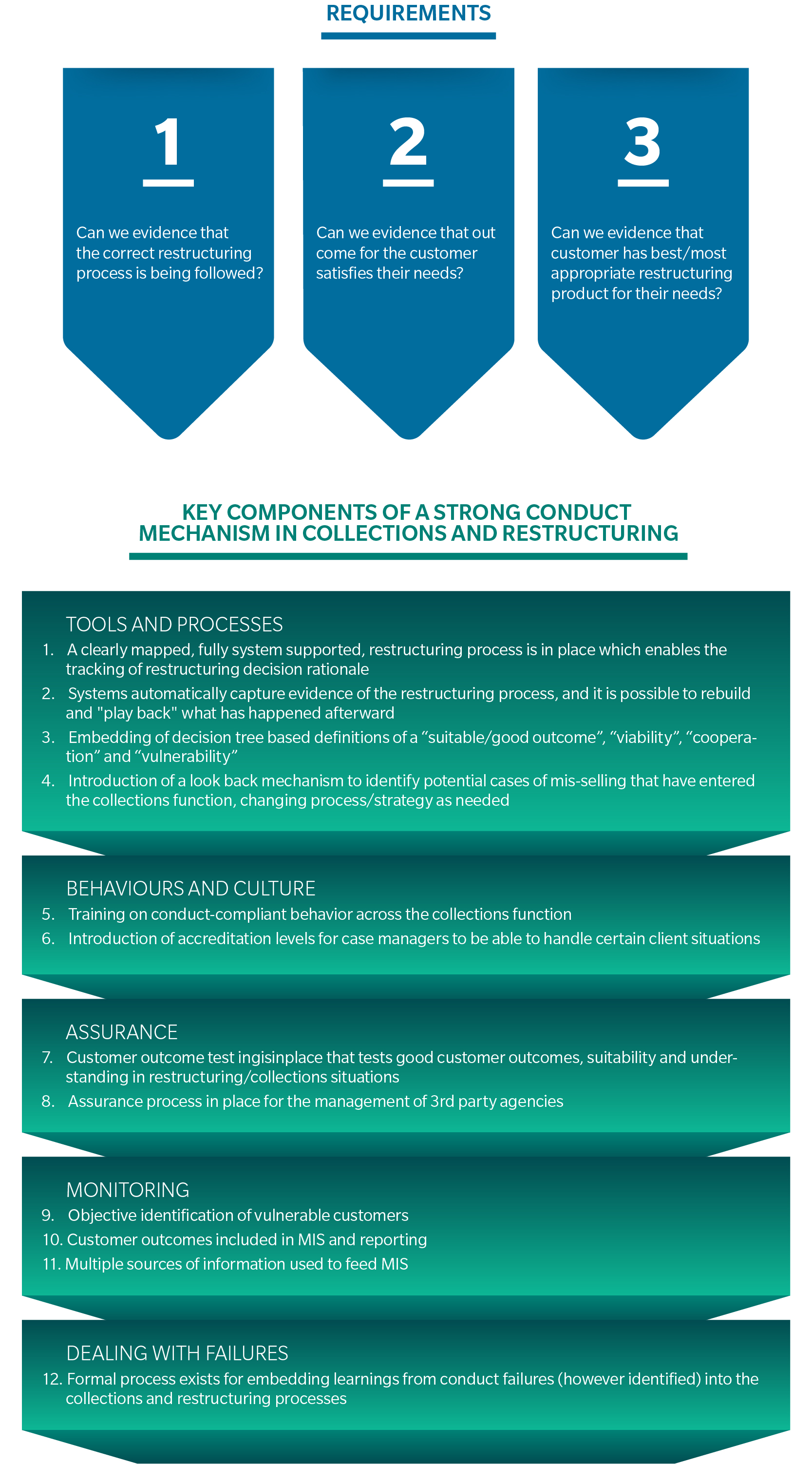We are living in uncertain times: trade wars, geopolitical uncertainty, sluggish European economies and Brexit to name a few notable macro risks.
And across Europe, banks are still carrying elevated non-performing loans (NPLs) from the last financial crisis. With these looming macro risks, it is critical that banks, and specifically collections functions, ensure that they are fit for purpose.
But in a highly tuned conduct regulatory environment, what does fit for purpose collections look like, and is what was previously called “best in class” actually running significant conduct risk?
Collections has always been a high value lever for banks with high ROI on investment initiatives. Efficiency and effectiveness have been the hallmarks of collections operations with ever-increasing levels of automation and digitization optimizing the financial metrics of NPLs.
But is this last line of defense about to turn sour and be the source of the next wave of redress and conduct fines?
In the wake of the financial crisis banks had unprecedented levels of NPLs which were causing a significant drag on the balance sheet. Significant resources were deployed against collections functions and bad bank units. Models were trained on optimizing capital positions and for many it was a fight for survival. But this was at a time when the conduct agenda was at a very nascent stage and it’s not clear whether policies and oversight ensured that it is a fair fight for all customers.
Ask any head of collections/NPL management what their key performance metrics are, and you will get a list of metrics based on operational efficiency and financial results:
Traditional bank optimization metrics:
While these are sensible metrics to optimize an operation and a balance sheet, without the appropriate controls in place they could run significant conduct risk. Many functions and their strategies lack sufficient consideration of the customer and their treatment beyond how to maximize returns for the bank. This has been evidenced by a number of emerging high-profile scandals of alleged misconduct.
In Ireland the domestic banks have been handed significant fines as a result of moving c. 40k customers off tracker mortgages, to their detriment. Around €1bn has been set aside by the six main mortgage providers to cover redress, compensation, fines and other associated costs. In the UK, whilst no action was taken against them by the FCA, several banks’ restructuring units came under significant regulatory scrutiny, and also suffered reputational damage over how they were perceived to have mishandled SME restructuring post-crisis, resulting in the closure of many businesses that others felt were viable.
Customer Orientated Measures
The Conduct agenda has developed significantly over the last 10 years and banks need to relook at their collections functions through a conduct lens, asking the following questions:
- How do we objectively identify vulnerable customers?
- How do we assess whether this was an unsuitable sale at origination, particularly for long term products that were originated before the current conduct regime?
- How do we measure customer outcomes?
- Do we have an NPS measure for these customers?
- Are we giving too much forbearance and kicking the can down the road?
- Are we giving too little forbearance and not helping customers get back on their feet?
- How are we managing performance of 3rd party agencies?
These questions and principles that underpin them are now well understood and embedded in origination processes, but less so at the back end of the value chain. This gap is even more concerning given the vulnerability of these customers and the risks of the circumstances that may have led to them being in this position.
Collections should be a moment of truth rather than a conduct risk.
As such we would recommend at a minimum the following actions to be taken by all banks in relation to the management of collections and restructuring:
1) Conduct a review of the conduct approach within the bank´s own channels and the approach used by third party agencies. We outline below in Figure 1 a typical framework for review that we have applied at other organizations
2) Development of a “look back” mechanism at the point of collections to identify (i) is there a risk that this product was not suitable for the customer at origination and (ii) how should this impact the restructuring product and strategy that is applied
3) Ensuring that appropriate MIS is in place to identify issues in collections related both to the types of forbearance solutions that are being offered to clients as well as the handling of the clients in the way these solutions are delivered.
Figure 1: Conduct framework in collections and restructuring

We believe with investment and forward thinking this issue can be handled but, in our experience, if a downturn begins and collections / restructuring units are not prepared then the consequences can be extremely negative for the organization.
While much of the conduct agenda has been at the front end of the value chain to date, this is likely to change with NPLs an increasing conduct risk.








